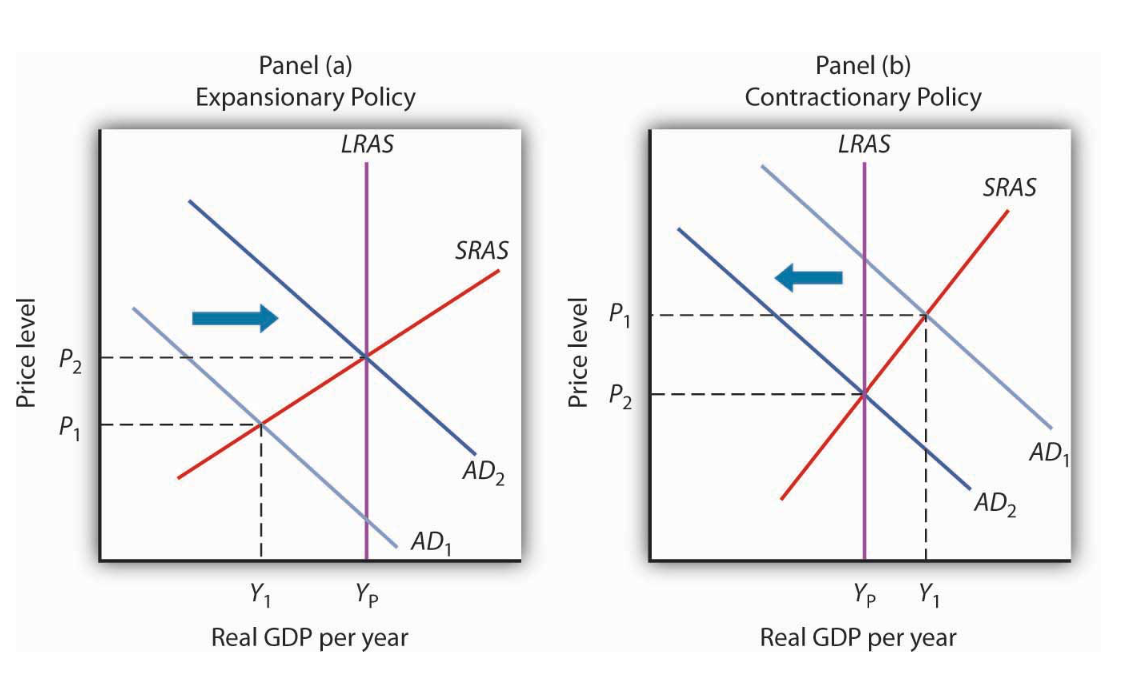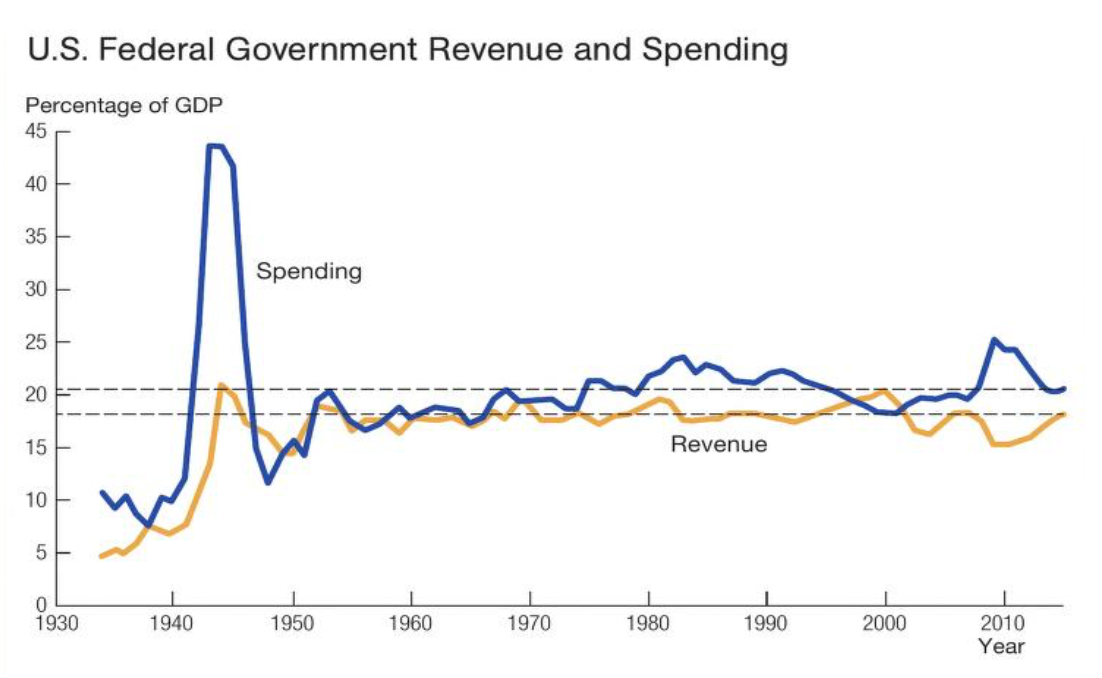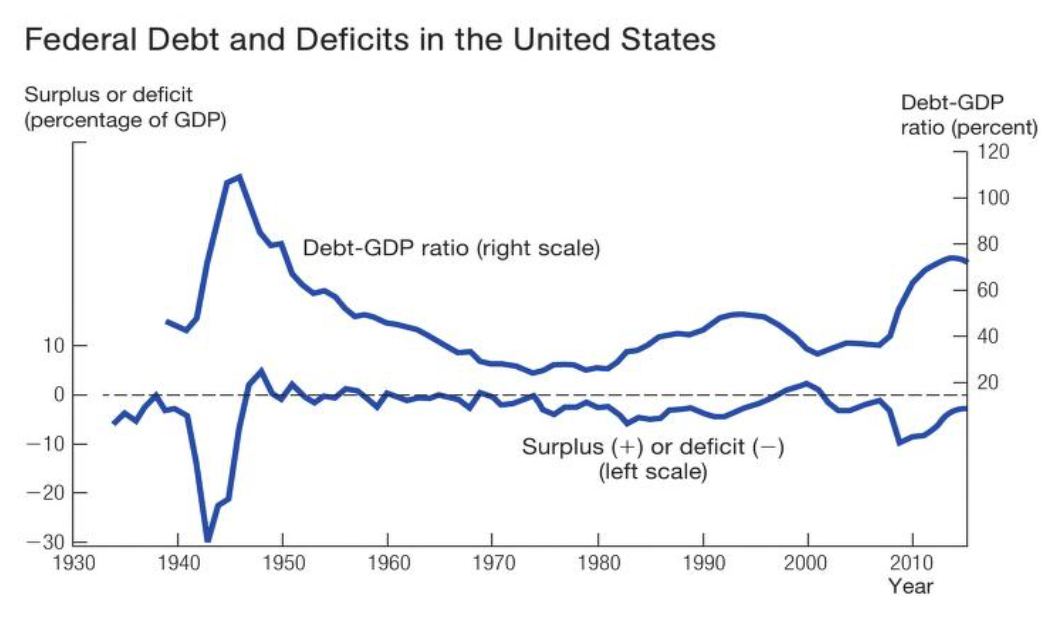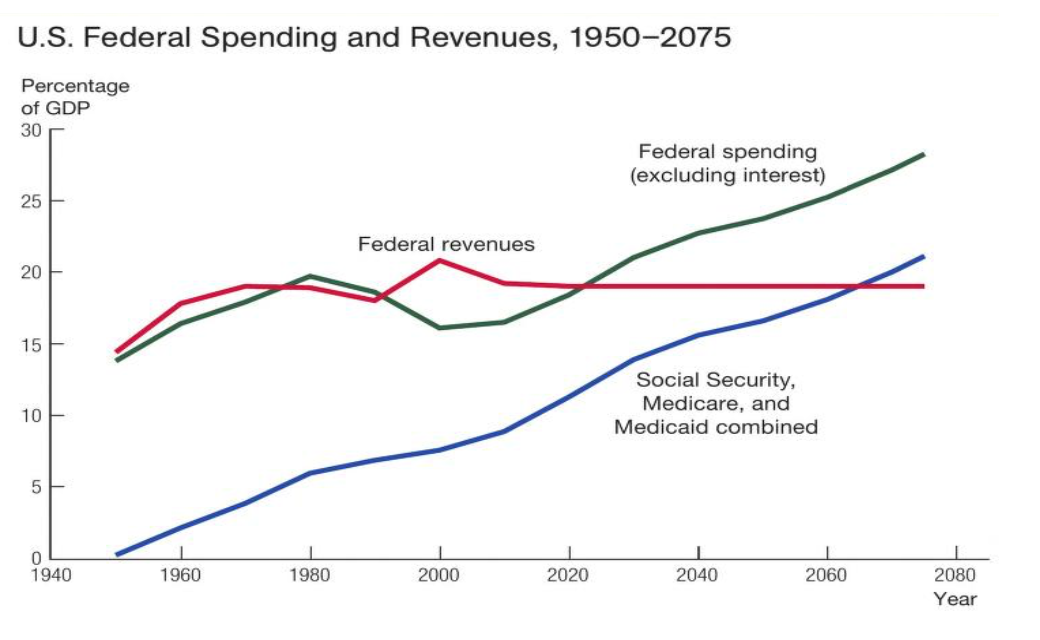
Evaluation of the View that US Fiscal Policy is Unsustainable
Arina Kenbayeva / May 10, 2023
This paper explores the argument that the United States' fiscal policy is unsustainable, given rising budget deficits and an increasing debt-to-GDP ratio. It examines the historical context of fiscal policy, the causes of fiscal unsustainability—such as entitlement program spending and healthcare costs—and potential solutions, including tax adjustments and alternative financing methods. The paper concludes that without significant reforms, US fiscal policy will lead to an unsustainable explosion of debt over the coming decades.
I. INTRODUCTION
The United States of America has been one of the most prosperous countries in the world for many years, but its fiscal policy is unsustainable. Recent forecasts suggest that it will result in an explosion of deficits and debt-to-GDP ratios over the next 75 years. This essay aims to evaluate the view that US fiscal policy is unsustainable and suggest the reasons behind these assumptions. In the first part of the essay, I am going to write about general information, such as what fiscal policy is and what makes it unsustainable. In the second part, I will write about the reasons for the unsustainability of this policy and what can be done to overcome this problem.
Ⅱ. Fiscal policy
Fiscal policy is a type of economic policy that through the use of government spending and taxation influence the economy. The goal of fiscal policy is to encourage economic growth, decrease unemployment, and control inflation. Fiscal policy can take two forms: expansionary and contractionary. As can be seen in Figure 1, Expansionary fiscal policy increases the level of aggregate demand, through either increases in government spending or reductions in taxes. Expansionary policy can do this by: 1) increasing consumption by raising disposable income through cuts in personal income taxes or payroll taxes; 2) increasing investments by raising after-tax profits through cuts in business taxes; and 3) increasing government purchases through increased spending by the federal government on final goods and services and raising federal grants to state and local governments to increase their expenditures on final goods and services. Contractionary fiscal policy does the reverse: it decreases the level of aggregate demand by decreasing consumption, decreasing investments, and decreasing government spending, either through cuts in government spending or increases in taxes.
The United States has a long history of using fiscal policy to stabilise the economy. During the Great Depression, President Franklin D. Roosevelt implemented several policies designed to increase government spending and stimulate the economy. These policies included the New Deal, a set of programmes that were intended to help stabilise and rebuild the economy. Since then, the United States has continued to use fiscal policy to stabilise the economy. In 2009, for example, the US government implemented the American Recovery and Reinvestment Act, which provided significant funding for infrastructure, education, and health. This helped to stimulate economic growth and reduce unemployment during the Great Recession.
Some economists believe that the government should play a limited role in the economy since its fiscal policy can lead to huge public debt, which consequently will make this policy unsustainable.
 Figure 1. FIscal Policy actions
Figure 1. FIscal Policy actions
Ⅲ. When fiscal policy is not sustainable
Fiscal policy is not sustainable when the government runs a persistent budget deficit and the debt-to-GDP ratio keeps rising. In the United States, the government has been running a budget deficit for several years, meaning that its spending exceeds its revenues. T ake a look at Figure 2. As you can see, the decades after World War II featured spending and revenues of about 18 percent of GDP . Then, starting around 1970 or so, systematic budget deficits began to emerge. Starting in 1998, surpluses made a brief reappearance before deficits again took over in 2002. In 2009, the budget deficit reached 10 percent of GDP as government revenue fell sharply during the Great Recession and government expenditures rose considerably to resolve the crisis and stimulate the economy. At the moment, the budget deficit of the US federal government has reached $ 1.1 trillion, which is 63% more than a year ago, due to increased spending on education, health benefits and interest payments on debts.
 Figure 2. U.S. Government Spending and Revenue
Figure 2. U.S. Government Spending and Revenue
When the government runs a deficit, it must borrow from lenders in the United States or abroad—by issuing and selling government bonds—to finance its spending. Figure 3 also shows the ratio of outstanding government (federal) debt to GDP . In 2005, the debt-to-GDP ratio was just over 35 percent, but this ratio rose to more than 74 percent in 2014. In 2015, the amount of federal debt held by the public was equal to $13.2 trillion, or more than $41,000 per person, and the federal government issued more than $400 billion worth of new bonds to finance the budget deficit, or more than $1,300 per person. At this point, the total federal debt has grown to $31.5 trillion and keeps rising.
 Figure 3. Federal Debt and Deficits in the United States
Figure 3. Federal Debt and Deficits in the United States
Ⅳ. Reasons and indicators of unsustainable fiscal policy
There are several reasons why the fiscal policy of the United States is unsustainable. As can be seen in Figure 4, the reason for the unsustainability of current policies is the projected rise in spending on three entitlement programmes: Social Security, Medicare, and Medicaid. This entitlement spending rose from 0.3 percent of GDP in 1950 to about 10 percent nowadays. T otal federal spending, excluding interest, averaged about 19 percent of GDP over this period, so spending on health and retirement has thus risen from a negligible fraction to more than a third of the total. It can be explained by the increased generosity of the entitlement programmes and the fraction of the population that will be eligible for these benefits. As shown in Figure 4, the fraction of GDP devoted to these programmes will rise from 7.6 percent in 2000 to 13.9 percent in 2030 and 21.1 percent by 2075.
The CBO projects Social Security accounts for some of the increases in spending—especially in the next 20 years—but it is not the primary source of the unsustainability of current policies. The main culprit, as stated, is health. Expenditures on Medicare and Medicaid are projected to rise from 3.4 percent of GDP in 2000 to 7.7 percent in 2030 and then to 14.9 percent by 2075. A primary cause of this increase is the underlying assumption that healthcare costs per recipient will grow at a rate that is 1 percentage point faster than the rate of per capita GDP growth.
 Figure 4. U.S. Federal Spending and Revenues, 1950-2075
Figure 4. U.S. Federal Spending and Revenues, 1950-2075
Recently, the COVID-19 pandemic has led to a significant increase in government spending (economic relief payments, enhanced unemployment benefits, small business loans, and increased funding for healthcare), leading to a further increase in the national debt.
Therefore, under current policies, total government spending is projected to rise to nearly 40 percent of GDP by 2075. With tax revenue stabilised at around 19 percent, this implies an exploding deficit and an exploding ratio of debt to GDP , which leads to unsustainable fiscal policy.
Ⅴ. What can be done to make it sustainable
Several measures can be taken to make the fiscal policy of the United States sustainable. The growing health care costs in the United States are due to the introduction of new expensive medical technologies and drugs. Therefore, the government will most likely have to increase tax revenues to cover the growing health care costs. But raising taxes is not always a good idea, as people will be unhappy with this decision and strikes may occur.
There are also alternative ways to finance healthcare without raising taxes. Such alternatives may include private health insurance or mandatory savings in individual health care expense accounts. But these alternatives can also create problems on their own. Thus, determining how society should finance rising healthcare costs is likely to be one of the most important public policy issues we will face over the next 50 years, not only in the United States, but in virtually all advanced economies.
Ⅵ. Conclusion
In conclusion, the view that US fiscal policy is unsustainable is accurate. This essay has evaluated the view that US fiscal policy is unsustainable and argued that the country is indeed on an unsustainable fiscal path. The national debt of the United States has been growing at an alarming rate, reaching over $31 trillion by now, equivalent to more than 100% of the country's GDP . The government has been running a persistent budget deficit, meaning that it spends more than it earns, adding to the national debt. The reasons for the unsustainability of fiscal policy include increased spending on Social Security, Medicare, and Medicaid. There is no concrete answer to how to make US fiscal policy sustainable. However, there are a few suggestions, such as raising taxes, mandating savings in individual health-spending accounts or including private health insurance, but both ideas have their limitations. That's why alternative ways of financing healthcare need to be explored, making it a crucial public policy question in the coming years.